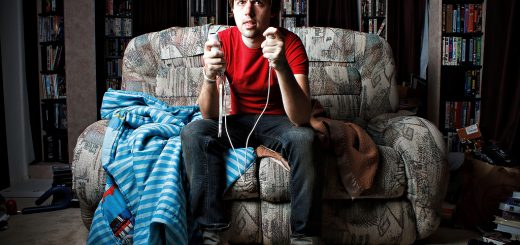The S Word: Talking About Suicide

It is estimated that more than 800,000 individuals die globally each year as a result of suicide and for those aged 15-29 years old, suicide is the second leading worldwide cause of death after road traffic accidents 1. But we don’t whisper about car accidents, or exchange sideways glances when someone mentions they lost a loved one in a car crash; yet we do shy away from discussing suicide. Is not talking about suicide also causing harm? And when suicide is talked about in the media, is it in a way that does more damage than good?
Talking about suicide can be challenging from many angles. On the one hand, we don’t talk about it enough individually, perpetuating stigma and feelings of shame towards those experiencing suicidal thoughts and ultimately reducing the likelihood that they will seek support. Asking a loved one if they are thinking about suicide could save their life. On the other, when suicide is covered in the media, it is often in a way that further stigmatises those who are suicidal or even increases suicide risk for vulnerable individuals, with lurid headlines contributing to “copycat” suicides.
The problem of stigma
Many people say that they are afraid of talking about suicide with friends and family in case they “put the idea in someone’s head”. There is, however, no evidence to suggest that talking sensitively about suicide will increase the chance that someone will choose to end their own life. From a research perspective, many individuals who have attempted suicide or experienced suicidal thoughts, actually report that taking part in studies about suicide and being able to speak about their experiences is very positive 2. A key problem is that suicide is not always spoken about with adequate sensitivity. People talk about those who have “committed” suicide- and yet it is not a crime, or describe it as “selfish” and “a coward’s way out”, when in actuality attempting suicide is an expression of unbearable psychological pain and an action to reduce their (perceived) burden upon others.
Indeed, stigma can lead individuals to feel hopeless, trapped and defeated; all of which are well-known risk factors for suicide 3. In one study that surveyed attitudes towards suicide in 26,800 individuals across 25 European countries, the results demonstrated that in countries where stigma was higher, i.e. where social acceptance of mental health problems was lower, the suicide rate was also higher 4. Whilst these data are correlational and indicate only that there is an association between high stigma and high suicide rates, not that one causes the other, they are suggestive of stigma playing a negative role in suicidality. As well as this, the study was cross-sectional, meaning the data related to suicide deaths that had already occurred and we cannot know from this study whether high stigma can predict high rates of suicide in the future.
Not just one cause
As humans we like simple explanations for things and suicide is no exception; we want a reason, one explanation for why someone took their own life. Problematically, when talking about suicide the media is fond of trying to pin it on a single cause, e.g. a bad break-up or cyberbullying, but the difficulty is that there is no one reason why someone dies by suicide. It is an incredibly complex phenomenon, involving psychological, biological, social and environmental reasons 5. A common misconception is to rely on mental illness as an explanation for suicide. Whilst approximately 95% of individuals who die by suicide will have a mental illness at the time of their death, only around 5% of people with depression take their own lives 6 and 5-13% of people with schizophrenia 7; mental illness alone is not enough to explain why suicide happens.
In the case of the recent Germanwings crash, in which 150 people tragically lost their lives, it is believed that co-pilot Andreas Lubitz intentionally downed the aircraft, which once again raised the ugly spectre of vilifying those with mental illness as the media latched on to snippets of Lubitz’s psychological life: he had apparently suffered from depression and researched suicide methods. Murder-suicide is an incredibly rare event, ranging from a rate of 0.6 per 100,000 of the population in the UK 8 to 0.19 per 100,000 in the US 9 (across different time periods). This doesn’t make the loss of life in this case any less painful, but does highlight that the waves of stigmatising media coverage that ensued, suggesting individuals with depression should not be allowed to work in certain roles because they may be a risk to others, or that individuals with a mental illness are more likely to be dangerous, were grossly exaggerated. In fact, those with mental health problems are more likely to be a victim of homicide than a perpetrator 10.
Careless coverage costs lives
Organisations such as Samaritans and the International Association for Suicide Prevention have developed guidelines for talking about suicide in the media and also for how suicide is portrayed in TV programmes1112. Efforts to reduce risk to vulnerable individuals from irresponsible media reporting of suicide are further hampered by the fact that the suicides reported in the media are usually not typical of the majority of suicides, generally using more violent methods and occurring in public places like hospitals or schools 13. Even write-ups of historical art exhibitions where the artist has died by suicide, e.g. Van Gough, manage to slip in explicit details of the artist’s suicide method and romanticise the way that they died 14.
In addition to tackling the issue of stigmatising language, crucially, the guidelines are also there to prevent “copycat” and cluster suicides. The bottom line is when the media report on suicides and give detailed descriptions of the method used;, this can lead to an increase in suicides and more particularly suicides by the same method. Madelyn Gould, from Columbia University, and colleagues from Dartmouth and Tufts University conducted a study of newspaper reporting of suicide and subsequent suicide point clusters (where a higher number of suicides than expected occur in a shorter than average timeframe) 15. Using US population health data, the researchers identified 48 teen suicide clusters from 1988 – 1996 and matched each of these to non-clustered suicide deaths. For each area, newspapers that were published after the first suicide death were combed for articles that included “suicide” in the headline or other suggestions that the person had died by suicide. In areas where suicide clusters occurred, there were far more news reports of suicide than when the first suicide was not closely followed by another suicide death (non-cluster suicides). Not only were there more news reports of suicide in cluster vs. non-cluster areas, but these reports were much more likely to include overly explicit detailed descriptions of the suicide method and the person, be more likely to include “suicide” in the headline and to make the front page. Again, these data show only an association between media reporting of suicide and subsequent suicide clusters and not a causal relationship. However, the fact that fewer sensationalist media reports appeared in areas with non-cluster suicides, relative to areas with cluster suicides, potentially suggests that it may be crucial to be careful in the way we discuss suicide in the media.
The take-home messages
Every suicide is a personal tragedy and for the 800,000 people who die each year as a result of suicide, there are hundreds of thousands more left behind grieving for their loved ones. One of the biggest tragedies is that we can all do something every day to try and reduce this number and yet most of us don’t. The science suggests that the way we talk about suicide can have an effect on the number of individuals who die by suicide. We can avoid the use of stigmatising language: people don’t commit cancer and they also don’t commit suicide, it’s not a crime. We can challenge poor media reporting of suicide when we see it and ensure that we set good examples of best practice when we write about suicide and mental health. Careless media coverage of suicide can cost lives, but careful coverage may save them.
This article was specialist edited by Jessica McLaren and copy edited by Nicole Nayar.
References
- World Health Organization (WHO). Preventing Suicide: A Global Imperative. 2014.
- Biddle L, Cooper J, Owen-Smith A, Klineberg E, Bennewith O, Hawton K, et al. Qualitative interviewing with vulnerable populations: Individuals’ experiences of participating in suicide and self-harm based research. Journal of Affective Disorders. 2013; 145(3):356–62.
- Rusch N, Zlati A, Black G, Thornicroft G. Does the stigma of mental illness contribute to suicidality? The British Journal of Psychiatry. 2014; 205(4):257–9.
- Schomerus G, Evans-Lacko S, Rüsch N, Mojtabai R, Angermeyer MC, Thornicroft G. Collective levels of stigma and national suicide rates in 25 European countries. Epidemiology and Psychiatric Sciences. 2015; 24(2): 166–71.
- O’Connor RC, Nock MK. The psychology of suicidal behaviour. The Lancet Psychiatry. 2014: 1(1):73–85.
- Bostwick JM, Pankratz VS. Affective disorders and suicide risk: a reexamination. American Journal of Psychiatry. 2000; 157: 1925-1932.
- Pompili M, Amador XF, Girardi P, Harkavy-Friedman J, Harrow M, Kaplan K, et al. Suicide risk in schizophrenia: learning from the past to change the future. Annals of General Psychiatry. 2007;6(1):10.
- Flynn S, Swinson N, While D, Hunt IM, Roscoe A, Rodway C, et al. Homicide followed by suicide: a cross-sectional study. Journal of Forensic Psychiatry & Psychology. 2009; 20(2):306–21.
- Logan J, Hill HA, Black ML, Crosby AE, Karch DL, Barnes JD, et al. Characteristics of Perpetrators in Homicide-Followed-by-Suicide Incidents: National Violent Death Reporting System–17 US States, 2003-2005. American Journal of Epidemiology. 2008; 168(9):1056–64.
- Rodway C, Flynn S, While D, Rahman MS, Kapur N, Appleby L, et al. Patients with mental illness as victims of homicide: a national consecutive case series. The Lancet Psychiatry. 2014;1(2):129–34.
- Samaritans. Media Guidelines for the Reporting of Suicide. 2014.
- International Association of Suicide Prevention & World Health Organization. Preventing Suicide: A Guide for Media Professionals. 2008.
- Machlin A, Pirkis J, Spittal MJ. Which Suicides Are Reported in the Media – and What Makes Them “Newsworthy”? Crisis: The Journal of Crisis Intervention and Suicide Prevention. 2013; 34(5):305–13.
- Pitman A, Stevenson F. Suicide Reporting Within British Newspapers’ Arts Coverage: Content Analysis of Adherence to Media Guidelines. Crisis: The Journal of Crisis Intervention and Suicide Prevention. 2015; 36(1):13–20.
- Gould MS, Kleinman MH, Lake AM, Forman J, Bassett Midle J. Newspaper coverage of suicide and initiation of suicide clusters in teenagers in the USA, 1988—96: A retrospective, population-based, case-control study. Lancet Psychiatry. 2014; 1(1): 34-43.











1 Response
[…] Talking About Suicide […]